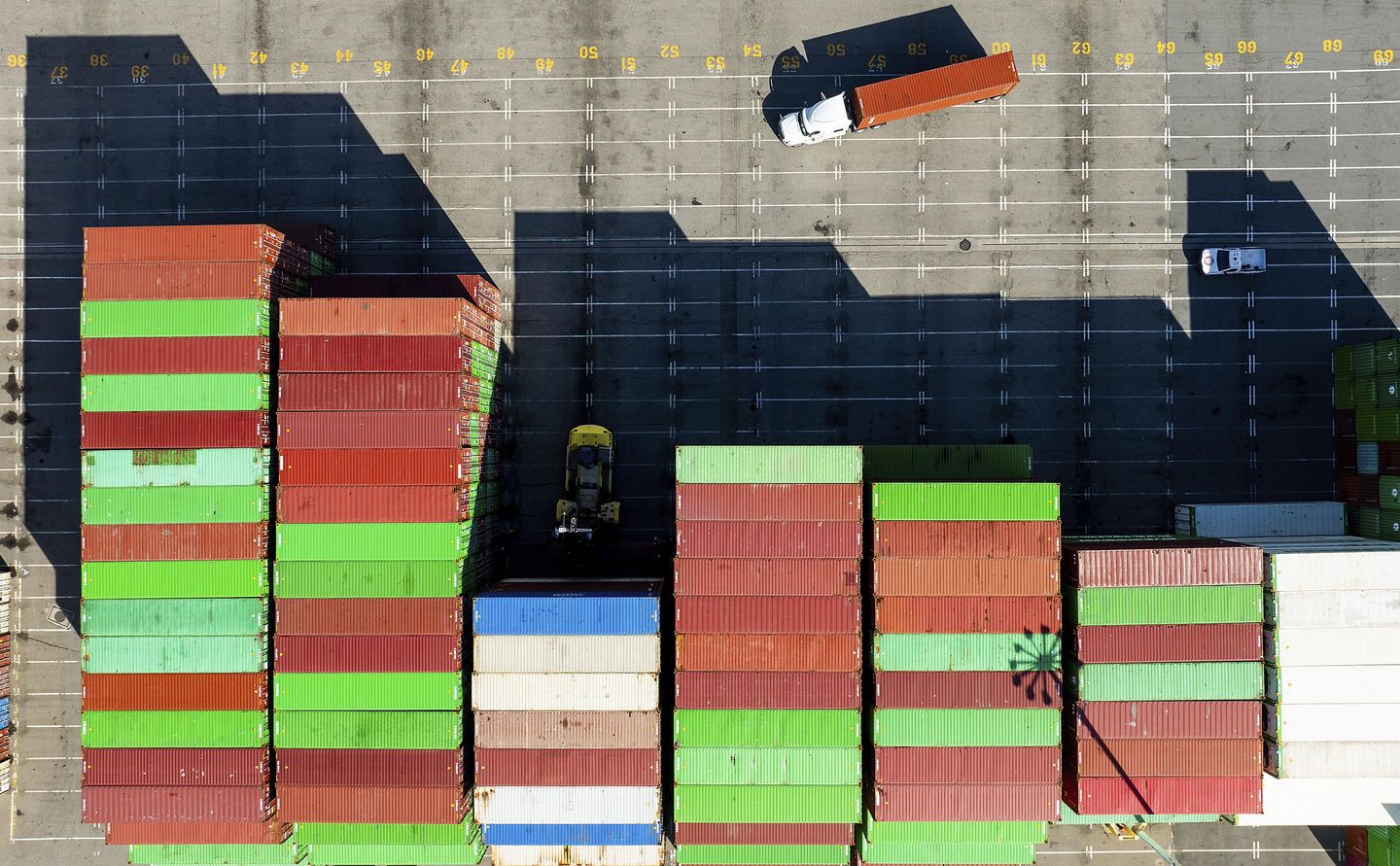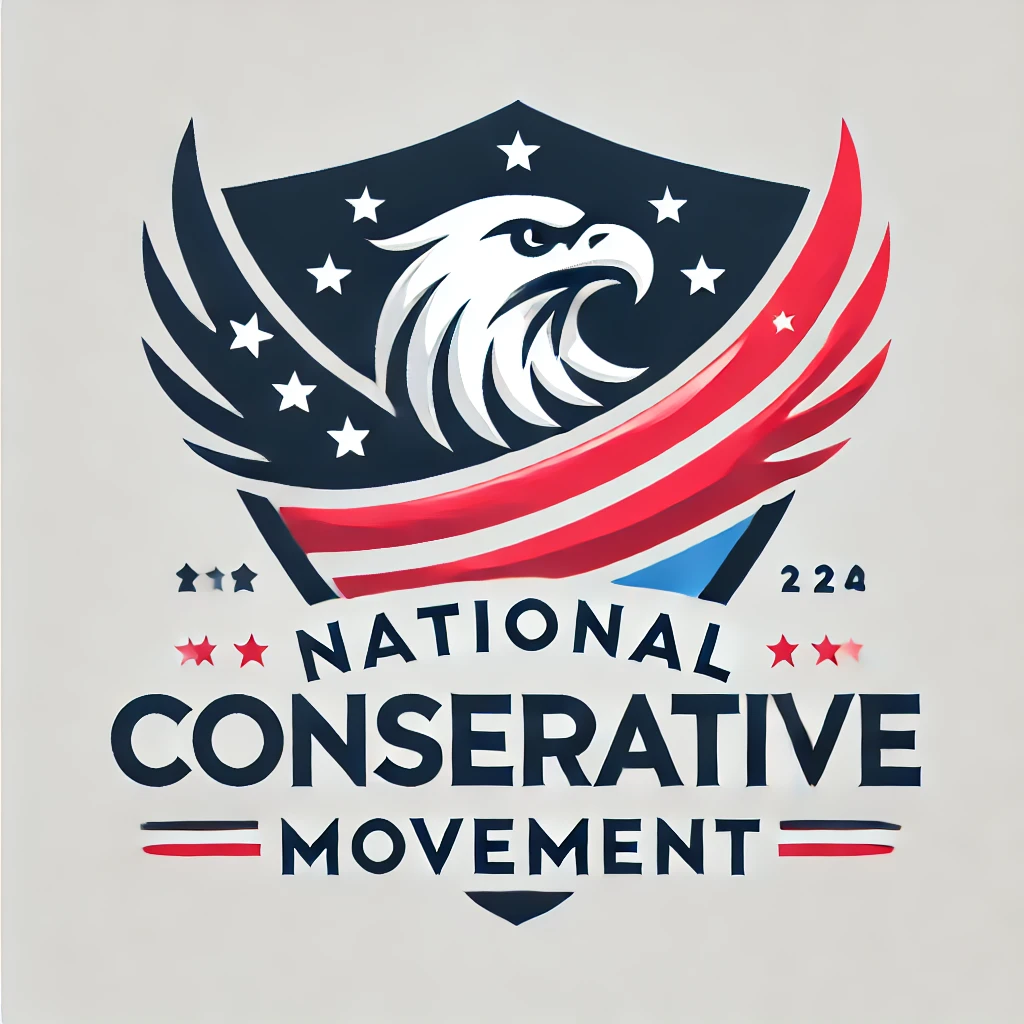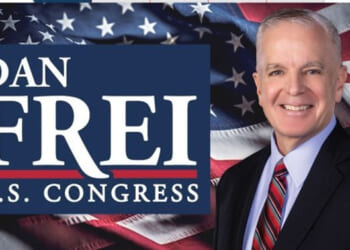
President Trump on Wednesday said he’s pausing his reciprocal tariffs for 90 days, a major reversal as his “Liberation Day” plan that ignited a multi-front trade war.
Mr. Trump said the tariffs on nations that don’t retaliate against the U.S. would drop to 10%, placing them in line with his blanket tariff level on all imports. The White House said Canada and Mexico would also face a 10% rate.
At the same time, Mr. Trump said he’s increasing the tariff rate on China to 125%, effective immediately, citing Beijing’s move to retaliate by increasing its levy on U.S. goods.
U.S. stocks mounted a huge rally upon the news. The Dow Jones Industrial Average surged 3,000 points, ending up nearly 8%, and the S&P 500 finished up 9.5% and the Nasdaq up 12%.
In granting the pause, Mr. Trump said people were getting skittish and that dozens of nations approached his administration to negotiate a reduction in trade barriers against the U.S.
“They were getting a little bit yippy, a little bit afraid, unlike these champions, because we have a big job to do,” Mr. Trump said while greeting NASCAR and INDY racing champions at the White House. “No other president would have done what I did.”
Mr. Trump said the U.S. had received a “tremendous amount of spirit from other countries,” including China, which he says wants to make a deal but doesn’t know “how quite to go about it.”
The pause is a major U-turn from White House messaging in recent days. Officials had ruled out pauses or relief, saying the program was necessary to correct trade deficits and put Main Street ahead of Wall Street.
The reciprocal tariffs had gone into effect Wednesday, meaning they lasted about 14 hours before Mr. Trump’s pause.
“Trump blinked,” Rep. Steven Horsford, Nevada Democrat, told U.S. Trade Representative Jamieson Greer, who’d spent hours testifying to the House Ways and Means Committee about the tariffs before Mr. Trump’s announcement.
“This is amateur hour, and it needs to stop,” Mr. Hosford said. “WTF, who’s in charge? Because it sure doesn’t look like it’s the trade representative. You just got the rug pulled out from you.”
Tariffs are a tax or duty paid by importers on the goods they bring in from foreign markets. Mr. Trump says tariffs are a great way to force companies to return to America or keep their operations in the U.S., employ American workers and create revenue to fund domestic programs.
In many cases, U.S. companies will pay the levies, and they might pass on at least some of the cost to consumers through higher prices.
Lawmakers, businesses and investors have spent days trying to digest Mr. Trump’s decision to issue a 10% tariff on all imports and heftier “reciprocal” levies on countries with far more exports to the U.S. than imports from American producers.
An Economist/YouGov poll released Wednesday found that 56% of Americans believe Mr. Trump’s tariff efforts have “gone too far” while only 27% said they’ve “been about right.”
As Mr. Trump pulled back, Democrats accused him of inflicting unnecessary whiplash.
“He’s playing red light-green light with our economy,” Senate Minority Leader Charles E. Schumer, New York Democrat, said.
Some conservatives who generally support Mr. Trump worried the economic gains from the reciprocal levies wouldn’t be worth the pain.
Senate Republicans on Tuesday said they were alarmed to see Mr. Trump is not considering exclusions for certain industries, and warned Mr. Greer that some businesses back home could go bankrupt from the levies.
Sen. Rand Paul, Kentucky Republican, is warning that tariffs are taxes on Americans, and Sen. Ted Cruz, Texas Republican, said on his podcast the GOP could face a “bloodbath” in 2026 if the tariff plan leads to a recession.
“You would face a Democrat House, and you might even face a Democrat Senate,” Mr. Cruz said.
Sen. Chuck Grassley, Iowa Republican, cosponsored a bipartisan bill that would let Congress rein in the president’s ability to impose tariffs and Rep. Don Bacon, Nebraska Republican, is leading similar legislation in the House.
Mr. Greer, the trade representative, defended Mr. Trump’s work during his second consecutive day of testimony on Capitol Hill.
He said trade deficits are a national emergency and Mr. Trump is taking bold action to restore U.S. manufacturing while reducing the impediments that foreign nations use to block U.S.-made goods.
“There are a lot of countries that understand exactly what the problem is that the president has set out and are willing to talk to us and are willing to negotiate,” Mr. Greer said.
Ways and Means Committee Chairman Jason Smith praised the administration for trying to correct a system in which, too often, American jobs are shipped off to places like Mexico.
“Changing course and undoing the damage caused by years of unbalanced trade relationships won’t happen overnight,” Mr. Smith, Missouri Republican, said. “President Trump’s economic agenda, from tariffs to tax relief to deregulation, is about making it competitive again to build, manufacture, grow and produce in America.”
Mr. Trump’s decision to pivot to a 10% tariff across the board will be a near-term boon to companies that set up supply chains in places like Vietnam and Cambodia and to small nations like Lesotho, which felt blindsided by Mr. Trump’s hefty reciprocal levies.
The European Commission approved tariffs that retaliate against Mr. Trump’s steel and aluminum tariffs, issued earlier this year. The levies will take effect on April 15 and target $24 billion worth of U.S. products, including motorcycles, poultry, and steel and aluminum, though Mr. Trump’s pause on reciprocal tariffs could delay additional pushback from Europe.
Asked if his credibility might falter because of the flip-flop, Mr. Trump said it is not about credibility but “flexibility.”
“Sometimes you have to be able to go under the wall, around the wall, or over the wall,” he said.
Quizzed on possible exemptions for certain U.S. companies, Mr. Trump said he would “look at it as time goes on” and make decisions “instinctively.”
China is a notable outlier at this juncture. Beijing increased levies on U.S. goods from 34% to 84% on Wednesday in response to Mr. Trump’s decision to slap a 104% tariff on Chinese goods.
Mr. Trump responded in kind, raising the levy on Chinese goods to 125% — a move that could have sweeping implications for toy companies and others that rely on Chinese output and could raise prices to keep their operations afloat.
“When you punch at the United States of America, President Trump is going to punch back harder,” White House press secretary Karoline Leavitt said.
The National Foreign Trade Council, a business association that promotes access to the global marketplace, said the broader pause was a “step in the right direction.”
“But let’s not celebrate the fact that it appears to leave in place a new baseline of 10% tariffs on most countries, plus significant levies on China, steel and aluminum and autos with the promise of more duties to come,” NFTC President Jake Colvin said. “While this temporary pause may lessen the immediate pain, it doesn’t diminish the uncertainty that is paralyzing companies’ trade, sourcing, and investment calculations as well as Americans’ ability to budget for their families and their future.”












